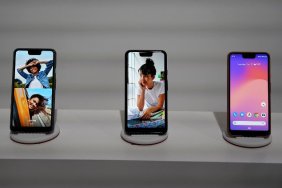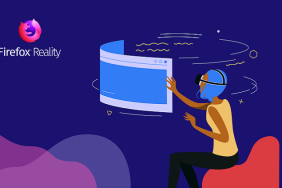The Google I/O conference was home to the announcement of the Google Daydream, a brand new virtual reality platform that opens the floodgates for any Android developers to manufacture their very own VR headsets.
The Google Daydream was a surprising announcement from the Google camp, as although many had expected that the search engine giant would strive to gain a more significant presence in the VR space following the high level of success enjoyed by its budget Google Cardboard, the company’s revelation that it would be seeking to produce the tools to help other hardware companies produce their own headsets was a little out of left-field.
With that being said, there are many question marks inevitably surrounding the Google Daydream, so here’s what you need to know about the new VR platform:
How it works
With Google Daydream, Google is effectively allowing Android developers to dip their respective toes into the waters of virtual reality by foregoing many of the expenses typically accumulated with jumping on board the fledgling technology. The hope from Google is that the popularity of Daydream could help VR burst into the mainstream more quickly than if each hardware manufacturer developed their own headset from scratch, and that could well prove to be the case.
Google will initially provide its own headset paired with its Nexus 6P smartphone, which according to the company will predominantly focus upon delivering VR experiences based upon existing apps of Google-owned properties such as Google Play Movies, Google Street View and YouTube. The Nexus 6P is the first device to be capable of running Daydream, with it supporting the upcoming Android VR mode that is set to be integrated into Android N, the company’s next smartphone and tablet operating system update,
However, many prominent smartphone developers have already pledged to create devices able to support Android VR in the next wave of Android N devices, including Samsung, HTC, Huawei, LG, Alcatel, ZTE, Xiaomi and Asus. Google has made Android VR comparability a requirement for utilizing Daydream, with it requiring its own set of sensors and screens capable of taking advantage of the new platform, so providing smartphone manufacturers continue to produce devices that can run it, the Daydream ecosystem will continue to expand into the distant future similar to the Android OS.
Price
While the pricing of the Google Daydream has yet to be confirmed, Google VR division leader Clay Bavor claimed that we should expect to see it costing roughly the same amount as the setup for a Samsung Gear VR. The Gear VR costs $99, though also requires a Samsung Galaxy S7/S7 Edge, Note 5 or S6/S6 Edge in order to function. Considering that the Daydream would need to be paired with a newer Android N device, assuming that the headset will sell for around the $99 mark we’re looking at a speculative price range between $800 – $900 for both the headset and phone.
Software

Google Daydream boasts a number of partnerships with prominent companies including HBO, NBA and the MLB, with each of them set to provide apps and games for the platform. Apps such as Netflix have also signed themselves up despite not offering VR versions of their content, with them instead likely to produce “flatscreen” offerings of movies and TV shows that can nonetheless be viewed using the Daydream headset.
In terms of games, Ubisoft is the biggest name to have partnered with Daydream, with them having produced a large number of Android games in the past and currently developing the VR game Eagle Flight for the Oculus Rift. It remains to be seen what kind of virtual reality games they will conjure up for Google’s headset in the future, but Need for Speed: No Limits was shown among the list of apps during the Google I/O conference.

The aforementioned array of Google apps also make appearances, carrying over from the VR versions of themselves seen on the Cardboard.
While it’s a limited list at the time of this writing, there will undoubtedly be plenty more announced as we approach the Daydream’s launch.
Design
There is no clear-cut design for the Google Daydream, with Google only posting a render of what the headset could look like. Though it’s suggestible that Google’s own version of the headset will look very similar to this render, other manufacturers may choose to go a different route with their own hardware, leaving room for plenty of aesthetic possibilities.
Controller

Aside from the Google Daydream requiring an Android N smartphone, Google has also made it clear that they will only allow devices to use the company’s new VR ecosystem if they accommodate for its accompanying motion controller. The small, simple device allows users to effectively browse various apps and play games using a Daydream headset, with it operating much more like a laser pointer when compared with the other VR controllers that have gone to market.
Release date
Though no solid release date has been given, Google has stated that its own Daydream headset will launch in the autumn, which means it could make its way to retail at any point between the tail-end of September through to December. The Google Daydream headsets produced by manufacturers such as Samsung and HTC will arrives at much later dates, given that a new wave of Android N smartphones first needs to be released.







